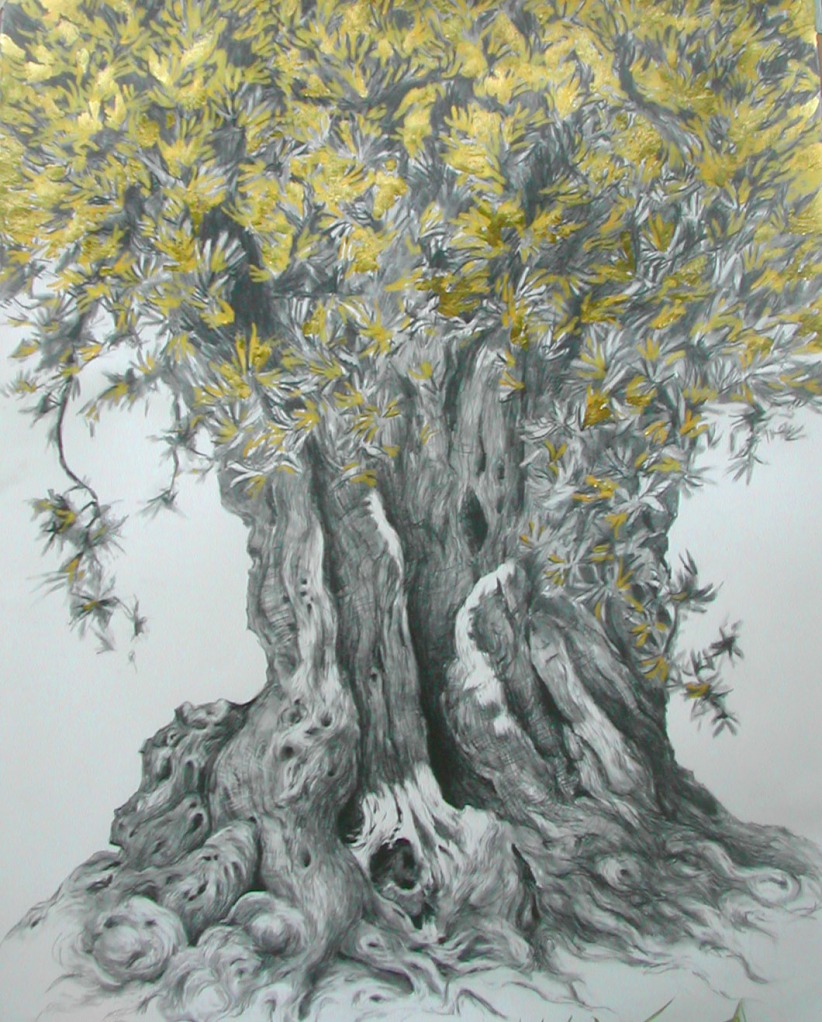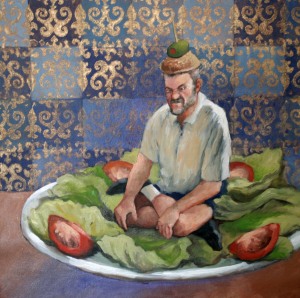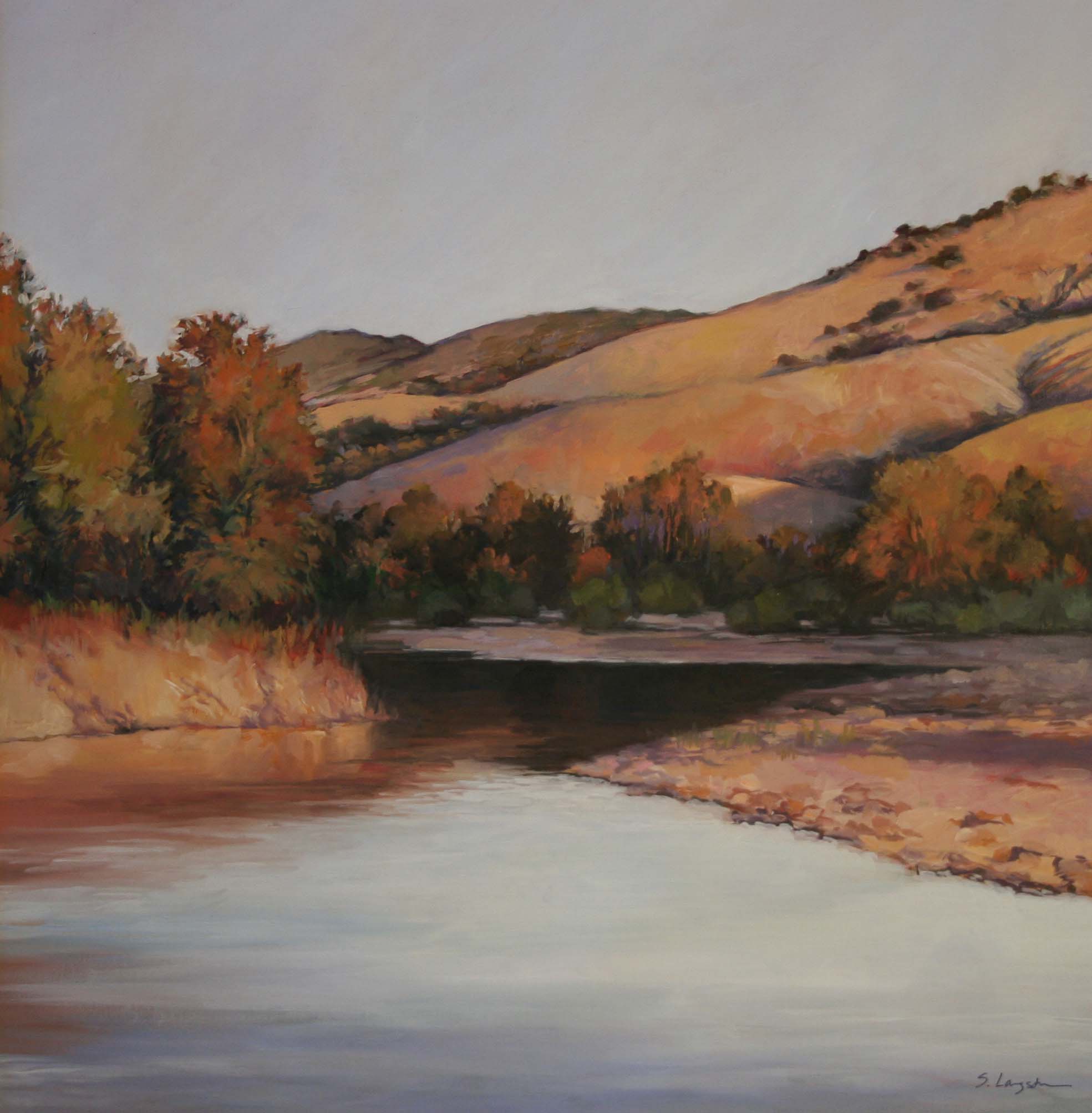I have read many accounts over the years by people who have moved to Italy in order to live out their dream; a simpler life filled with good food, kind neighbors, good wine, and a more relaxed rhythm. Ah yes, the dream. Some of these accounts give the idea that having olive trees and making your own oil fits snugly into the category of “simple things,” but I assure you nothing could be further from the truth. One rather successful writer told of undertaking–and completing– the pruning of her trees over a weekend. Very poetic. Maybe she did her pruning with a chainsaw and cut her trees off at the base, because that would have been the only way she could have completed the task in so little time.
Establishing a tree which will produce fruit for many years is more than an art: it is a long and detailed process which requires a depth of knowledge that most people simply cannot hope to absorb if they come to the study later in life. When we bought our land it already had a number of older trees on it, and we have planted new ones to augment the harvest. Ours have been helped along through their formative years by a couple of older men who, each a maestro of pruning in his own right, have had very different views on correct methodology. Some pruners keep their trees chopped back and tortured into bony shapes, others leave more small branches, both in the search for the vital equilibrium between strength of tree and amount of fruit production. I still don’t know which of our crotchety gentlemen can claim superior results. All I can say is that I thought I could learn myself, and I am humbled in my acceptance that, other than cosmetic touch-ups, it simply is not to be.
A healthy olive tree, left to its own devices, will turn into a black hole of foliage, sucking the light out of its own surroundings. Pruning it into shape is for its own good, even if the tree may not be easily convinced. Knowing where to make the master cut, which has to be done every few years, is an art in itself. The sopacavadd*, which establishes the maximum height attainable by a tree, lops off the main branches which strive skyward. If this isn’t done, it becomes almost impossible to pick the olives with even the tallest ladder. These shoots will also encourage the rest of the tree to hold back on production. After the cuts are made, the profile of the tree becomes something akin to a giant rheumatic and knuckly spider, crouching over its downward-hanging greenery, but entirely devoid of leaves at the top. It will need a year to recover, but it will bear more fruit. It takes an expert up to an entire long day to do the pruning of one mature tree correctly. The rest of the branches will be carefully thinned to leave only those which hang downward, which makes raking the fruit from the branches much easier. The olives fall into a large piece of netting which is placed around the base of the tree in November for the harvest. The use of the new, and in my opinion horrible, vibrating harvesters still accounts for only about twenty percent of labor. Most are still gathered by friends and family on ladders spending day after day, raking down the fruit and loading it into plastic crates, packing those into cars, ferrying them to the frantoio. Every town has one. It is worth a visit to this large and active pressing mill during harvest season–it is a hopping place, and your crates will be labeled and stacked carefully to avoid any ambiguity. One’s oil is a very personal, and jealously guarded, commodity.
I always thought, “How wonderful to harvest my own olives and make my own oil!” until I saw how labor-intensive the process was. Now we offer the pleasure of the actual harvesting to friends and acquaintances who are willing, and we split the oil fifty-fifty with them. It seems like the perfect arrangement: they don’t pay for the oil, and I am free to paint. We normally give away at least half of the oil we produce, even after splitting the initial yield.
Most trees have a heavy harvest every two years, and a light to negligible production in off- years. There is a cursory pruning around harvest time, but the main one takes place in early Spring, and results in piles of greenery that is utilized on March 19, for the Festa of San Giuseppe. These cuttings are dragged by the tractorful into town and piled in huge towers to be kindled into raging fires at sunset. It is a delightfully smoky solution to getting rid of the cuttings, and simultaneously placating the pyromaniacal urges in all of us. These falo are accompanied by the traditional dish of pasta e ceci, (pasta with chickpeas) served free to all out of giant cauldrons, and zeppole, which are fried or baked bignet filled with pastry creme and topped with a bitter cherry, or amarena. It is a rite of passage from Winter into Spring. I always hope for wind on March 19, because otherwise a pall of smoke can hang over the town for hours.
Olive trees are resistant to almost every vicissitude of climate, and even fire will not easily kill them. They grit their teeth and stand as all of their growth toward the light of heaven is hacked away and they become skeletal shadows of their former selves. They have a capacity for suckering–sprouting hundreds of small shoots from the base– and it can be incredibly time-consuming to keep these trimmed back if you have a lot of trees. Every pruning cut anywhere on the tree will lead to a number of new shoots which in a year will have grown thick enough to require the big guns: heavy loppers or a hatchet. I can almost hear the trees snickering as I flail away with my tools in the hopes of creating a picture-perfect landscape. They have been here many more years than me, and they will be here long after I am gone. An olive tree has all the time in the world; the ulivo bides.
drawing: “Ulivo 2 (Tree of Souls)” pencil and gold leaf on paper 2009
*(dialect, Italian: sopracavallo)





